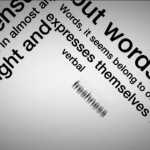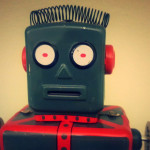Rossum’s Universal Robots is not a particularly good play, but it’s important for one very simple reason: it introduced the word “robot” to the world.
These aren’t your typical robots
Rossum’s Universal Robots (R.U.R.) is a Czech play, written by Karel Capek, about a corporation called — that’s right — Rossum’s Universal Robots.
At the time the play begins, it’s run by a man named Harry Domin. His robots are different from what we’d think of as robots today; they’re not made with mechanical parts, but are human-like biological machines, nearly indistinguishable from humans except for the fact that they have no “soul,” no likes or dislikes, and no feelings or opinions.
They’re made to work and, inevitably, to fight. Their parts are grown in vats, with nerves and veins weaved in a spinning mill. In that sense, they’re a far cry from our modern idea of a robot: more or less human, only built instead of born.
According to Wikipedia, in regards to using the term “robot” to describe these creations, Karel Capek
“…named his brother as the true inventor of the word. In its original Czech, robota means forced labour of the kind that serfs had to perform on their masters’ lands, and is derived from rab, meaning ‘slave.'”
Act One
Act One begins with the arrival of a woman named Helena Glory, who meets with Domin at the factory as a representative of the League of Humanity, an organization which seeks equal rights for robots.
She meets a few, and at first doesn’t realize they’re not human; she has a hard time grappling with the fact that, while they seem perfectly human, the robots are hollow and subservient on the inside.
Domin tells Helena of the origins of the factory, and how the original designs of the robots were created by a man named Rossum. He triumphantly explains how their manufacture is changing the world as they know it.
Helena then decides to go ahead and marry Domin for no apparent reason.
Acts Two & Three
The next two acts are about what you’d expect from a “robots rise up against humanity” plot: in the second act, ten years have passed, to the day, and rumors of a decrease in human births and robot rebellion paint a bleak portrait of humanity’s future.
As it turns out, the manufacture of robots has been an incredible success, as prices of goods have dropped dramatically due to the decrease in labor costs, and world governments have begun to use robots to fight their wars.
But it seems the human spirit has died in the process. Robots now outnumber humans 1,000 to 1, and recently they’ve turned violent, tired of being slaves to an inferior life-form.
Helena, in a rebellion of her own, secretly burns the only copy (yes, the only copy) of Rossum’s technical documents on how to design the robots (which later would have been the perfect bargaining chip for the small group of humans to escape alive, because the robots themselves cannot reproduce and, unlike our modern conception of the robot, these will not live forever).
It’s also revealed that Dr. Gall, one of the factory scientists, had been working on a new robot prototype, Robotess Helena. Weird.
Domin, Aquist (a builder), and the scientists sit in a drawing room and consider why this happened, how it could have been avoided, and wax philosophic about whether or not it was right to construct robots to begin with. Helena admits to asking Dr. Gall to modify the robots, to give them souls.
By the end of the third act, after a short-lived attempt at survival, all but one of the humans are brutally decommissioned.
The Epilogue
In the epilogue, it’s revealed that Aquist, the last remaining human (who was spared because he was a builder and used his hands like the robots), has been forced to spend the last years of his life experimenting in an attempt to re-discover the means for building more robots.
Of course, not being a scientist himself, and without having the original designs, it’s impossible for him to do so. It has a very I Am Legend air to it.
It’s then suggested that he should dissect some of the existing robots to learn more about how they’re made. After some hesitation, he agrees to do so.
But when it comes to light that the robotess Helena and the robot Primus care about each other, and are willing to die for each other and be dissected so that the other may live, Alquist realizes that these two are more or less human themselves, the Adam and Eve of a new life-form.
Apparently, they together will be able to keep life on Earth going.
Roll credits.
Rossum’s Universal Robots is short. It’s weird. It’s definitely a product of it’s time. As a story, it’s not great.
Even so, I like R.U.R., if only for the novelty that it contains the first use of the word “robot.” It’s worth a read. And, honestly, given the current zombie craze, a robot apocalypse would almost be a refreshing change of pace.




